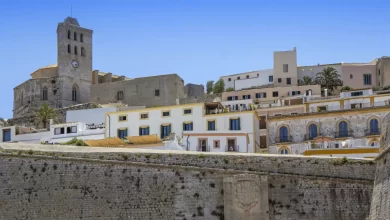Curious About Blackening Seasoning? Uncover the Flavorful Magic

Discovering the Art of Blackening Seasoning
Picture this – a sizzling pan, a burst of fragrant aromas, and the promise of a tantalizing culinary experience. What’s the secret behind transforming a simple dish into a flavor-packed masterpiece? Enter blackening seasoning, the magical blend of spices that elevates your cooking game to a whole new level. In this article, we’ll delve into the captivating world of blackening seasoning, exploring its history, ingredients, culinary applications, and even how to create your own signature blend.
A Brief History of Blackening Seasoning
The origins of blackening seasoning can be traced back to the vibrant and spicy cuisine of Louisiana. Chef Paul Prudhomme is often credited with popularizing this technique in the 1980s, using a fiery mix of herbs and spices to create the iconic “blackened redfish.” Since then, the seasoning has evolved, inspiring countless variations and becoming a staple in Southern and Creole cooking.
The Essential Ingredients
At the heart of every blackening seasoning blend are the essential ingredients that dance together to create a symphony of flavors. Paprika adds color and a subtle sweetness, while cayenne pepper brings the heat. Garlic and onion powder contribute depth, while thyme and oregano infuse herbal notes. The marriage of these spices results in a harmonious balance that awakens your taste buds.
Crafting Your Own Blackening Seasoning Blend
Customization is key in the culinary world, and crafting your own blackening seasoning blend is a creative endeavor. Here’s a simple recipe to create your very own signature blend of blackening seasoning:
Homemade Blackening Seasoning Recipe:
Ingredients:
- 2 tablespoons paprika
- 1 tablespoon dried thyme
- 1 tablespoon dried oregano
- 1 tablespoon garlic powder
- 1 tablespoon onion powder
- 1 teaspoon cayenne pepper (adjust to taste)
- 1 teaspoon ground black pepper
- 1 teaspoon salt
Instructions:
- In a bowl, combine paprika, dried thyme, dried oregano, garlic powder, onion powder, cayenne pepper, ground black pepper, and salt.
- Mix the ingredients thoroughly until they’re well incorporated. This ensures that each spice is evenly distributed throughout the blend.
- Taste a pinch of the seasoning to adjust the heat level. If you prefer a spicier blend, add a bit more cayenne pepper. For a milder version, reduce the amount of cayenne.
- Transfer the blackening seasoning to an airtight container. Store it in a cool, dry place, away from direct sunlight. Proper storage ensures the longevity of the flavors.
Tips:
- Feel free to experiment by adding other spices to the blend, such as smoked paprika, dried basil, or even a touch of ground mustard for extra complexity.
- If you’re a fan of smoky flavors, consider including a small amount of smoked paprika to the mix.
- Make a larger batch of the seasoning and keep it on hand for quick and easy meal preparation.
Culinary Alchemy: How Blackening Works
The magic of blackening lies in the Maillard reaction – a chemical process that occurs when proteins and sugars in food undergo browning under high heat. When you generously coat fish, chicken, or even vegetables with blackening seasoning and sear them in a smoking-hot skillet, the spices caramelize and create a savory crust, sealing in the natural juices and imparting a smoky flavor.
Versatility on Your Plate
Blackening seasoning isn’t limited to a single dish; its versatility is what makes it a kitchen superhero. From classic blackened catfish and chicken to innovative twists like blackened tofu or cauliflower steaks, the seasoning adds a burst of flavor that elevates your meals from ordinary to extraordinary.
Tips for Perfect Blackening
Achieving the perfect blackened crust requires finesse. Begin with a hot, dry skillet to ensure a beautiful sear without steaming the food. Use a neutral oil with a high smoke point, like grapeseed or canola oil, to prevent the spices from burning. Pat the protein dry before applying the seasoning for maximum adherence, and resist the temptation to overcrowd the pan – each piece deserves its moment in the spotlight.
Embracing the Sensory Experience
Cooking is not just about taste; it’s an immersive sensory experience. The sizzle of the spices hitting the pan, the wafting aroma that fills the air, and the visual delight of watching the crust form – blackening engages all your senses, making every step of the process a joy to behold.
A Flavorful Journey
With this comprehensive guide, you’re ready to embrace the enchanting world of blackening seasoning. From its historical roots to its modern culinary applications, the journey promises to be as captivating as the flavors it imparts to your dishes. So, don your apron, gather your spices, and get ready to indulge in the delightful realm of blackened perfection.



